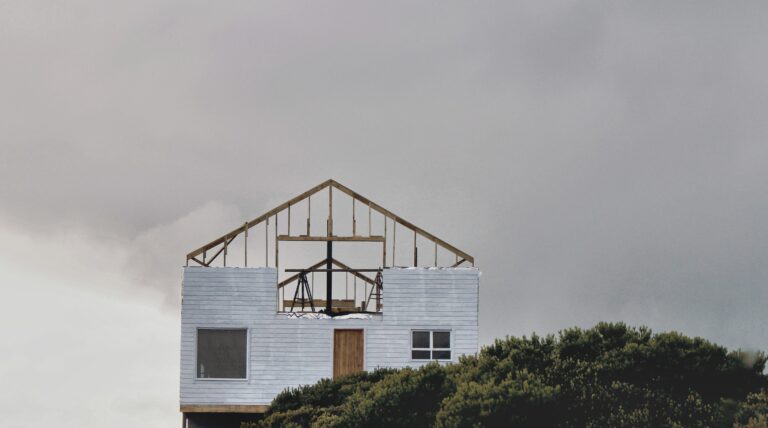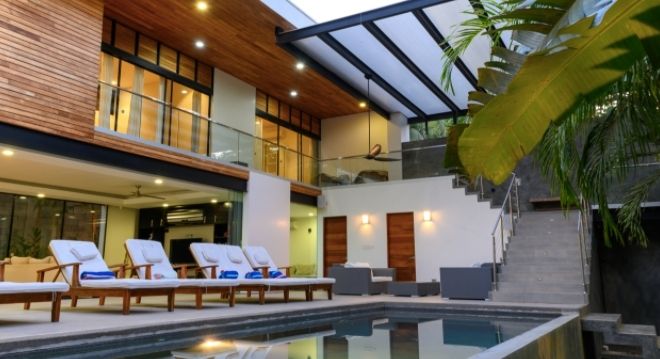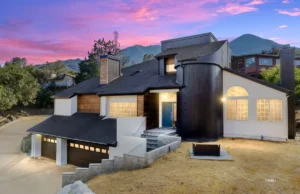These 4 “Surprise” Short-Term-Rental Costs Can Kill Profits – Here’s How To Avoid Them
Just how strong? AirDNA’s 2022 Short-Term-Rental Outlook Report puts this year’s ADR at nearly 17% over the pre-pandemic rate, and expected revenue at nearly 30% over the “before times.” So it follows that short-term-rental owners and property managers can expect short-term-rental profits to grow in tow. If, that is, they are automating operations, streamlining services, and keeping costs in check. Especially unplanned-for and easy-to-neglect short-term-rental costs. We’re talking about those unforeseen expenditures that throw a wrench into profit predictions and render income calculations obsolete.
Here, we lay out the four most frustrating surprise short-term-rental costs. We’ll tell you what to look for, and how to avoid spending money where you don’t have to, so that your properties are always “rental ready,” and your profits stay in your pocket.
The Short-Term Vacation Rental “Fearsome Four”
- Unanticipated repairs and replacements.
- Fines or penalties for violating STR-Permit regulations or local ordinances.
- Rising and unnecessary utility costs.
- Unanticipated vacancy.
Find out how you can scale your cleaning operations.
1. Unanticipated Property Repair Or Replacement
Short-term-rental operating expenses including cleaning, maintenance, insurance and taxes are fairly simple to anticipate and calculate. But major property repair or replacement? Not so much. Yes, you may be able to look ahead and see the need to upgrade a clunky HVAC system or replace an old roof. These kinds of “milestone” fixes will then go into your calculation of the property’s CapEx expenses.
But as pandemic-related travel restrictions lift, and travelers seek relief (and, sometimes, boisterous release) from months of on-again-off-again COVID-19 surges and ebbs, property damage claims and costs are on the rise. Short-term-rental insurer Proper Insurance puts the average cost of a claim for damage resulting from guests at right around $13,000. That’s the equivalent of 52 nights at the predicted 2022 ADR of $249.64. A repair or replacement that costs even a fraction of that amount can be enough to decimate expected rental profits for most hosts. So it’s incredibly important to prevent the situations that can lead to damage, before the damage is done.

Reports of Airbnb “party houses” first became a regular news feature in late 2020. In 2021, these stories increased in both frequency and intensity, as some revelers shifted their rowdiness away from clubs and bars, and into less restricted short-term rentals.
Fortunately, as the great travel recovery of 2022 commences, Airbnb and Vrbo are both taking proactive steps to prevent parties and de-list problematic party houses.
But guest groups don’t have to be throwing an official party for party-like behaviors to ensue. A beautiful location, a great house, a bunch of friends, a case of tequila and a blender, a year’s worth of pent-up celebration energy…these can lead to broken blinds, stained upholstery, cracked tiles, broken windows or damaged floors. And the cost of fixing these damages can quickly cancel out profits associated with high demand and strong ADR.
- Screen guests thoroughly before accepting bookings: Check for complete OTA profiles, read guest reviews, ask questions about your guests’ plans, and obtain IDs for all booked guests.
- Consider requiring a multiple-night-minimum, especially during high-risk periods such as spring break, or when a festival or major sports event is happening nearby.
- Install a privacy-safe noise sensor both indoors and outdoors, and make sure it includes automatic guest messaging to remind guests of noise rules and stop excessive noise before it leads to damage.
2. Fines or Penalties for Violating STR-Permit Regulations or Local Ordinances
Most cities and counties in the U.S. where short-term rentals are popular have long lists of stipulations that these rentals must comply with in order to obtain a permit to operate. These include regulations on parking, trash disposal, noise and occupancy limits. By applying and paying for a short-term-rental permit, the property owner agrees to comply with these regulations.
Some rules apply to things guests are directly responsible for. Guests, for example, are responsible for parking their cars. They’re also generally responsible for taking out trash, controlling their volume and making sure only registered guests are staying at the property.
Other permit rules may have to do with property location (for example, a new Nevada law prohibiting short-term vacation rentals within 2,500 feet of any resort hotel in tourist-heavy Las Vegas and Henderson), or fire prevention (i.e. Lake Tahoe’s requirement for inspection of natural and landscaped areas around STRs in high fire rating zones). And still other rules may apply to regular maintenance, upkeep or landscaping.

- Regularly monitor local ordinances for updates and ensure that the property is in compliance.
- Spell out all “house rules” on the rental listing, including noise limits, occupancy limits, parking requirements, smoking restrictions and visitor rules.
- Remind guests of rules (and penalties) in booking confirmation, follow-up correspondence and on display at property.
Even if the area where your short-term-rental property is located does not require an operation permit, you can be liable for fines, fees and unforeseen costs. These may include HOA fines, city noise ordinance fines…even legal fees to fight noise- or nuisance-related lawsuits. Make sure you know exactly what’s allowed in the city, town or municipality where your rental property resides. And take proactive measures to reduce your risk of upsetting neighbors or violating rules. It’s not just the right thing to do–the preservation of the short-term-rental industry depends on it.
3. Rising and Unnecessary Utility Costs
Unlike long-term leases, short-term rentals cannot pass utility bills along to tenants. Utility costs also rise year over year, and can spike during high seasons, as local electricity grids are maxed out. For this reason, it’s incredibly important to monitor utility costs closely, before they eat into anticipated profits.
- Install a smart-home thermostat. These inexpensive devices help you avoid overspending on heating or cooling, by adjusting your property’s HVAC system remotely between guest stays, and while booked guests come and go from the property.
- Switch from incandescent bulbs to LED lighting…which, alone, can cut electricity costs by up to 75%. In many areas, newer construction requires LED light fixtures exclusively, specifically because they are so much more energy efficient.
- Swap out high-wattage plasma televisions for lower-wattage LED TVs.
- Replace older appliances with ENERGY STAR certified ones, for big savings over time. Examples:
- An ENERGY STAR certified clothes washer uses 40 to 50 percent less energy and about 55 percent less water than standard washers.
- ENERGY STAR certified dryers use 20 percent less electricity than conventional machines.
- Most ENERGY STAR certified dishwashers are more than 12 percent more efficient than non-certified models.
- Replace single-pane windows with double-pane windows, and put in good insulation.

Yes, these CapEx expenses require upfront payment. But when a property’s primary guests are short-term visitors, who are not paying the utility bills, and are much less likely to switch off lights or turn down the A/C at night than long-term residents, the investment is well worth it.
Equally important is cutting cables. More than 95% of Americans own a mobile phone, so there’s little reason to have a landline in a vacation rental property. Likewise, cable TV, which can cost hundreds of dollars a month for “premium” packages with endless unwatched channels, is a cost that’s ripe for slashing. Instead, install a Smart TV system with a handful of great streaming platforms, and let guests take their pick for movies, TV shows, sports events and other screened entertainment, at a fraction of the cost of cable.
4. Unanticipated Vacancy
Most short-term rentals have high seasons and lower seasons (although the advent of work-from-home jobs, flexible living and digital nomadism has changed the idea of seasonality more than a little). Still, plenty of non-seasonal factors can affect short-term-rental vacancy rates.
Maintenance neglect, ho-hum marketing and poor responsiveness to guests can lead to a non-operational property or negative reviews. And the cost of unbooked nights can quickly take a big bite out of planned profits. So it’s important to maintain rental readiness in order to capture bookings when demand is high, and equally important to market proactively when demand takes a dip.

Source: Noiseaware.com
- Make cleaning Priority One. Airbnb consistently reports that the leading factor in garnering good guest reviews is cleanliness. In the current travel market, cleanliness is more important than ever before, as guests seek out safe, sanitized accommodations. Have cleaning QA standards firmly in place and confirm that they are being met.
- OK, make maintenance co-Priority One. A broken A/C, leaky faucet or faulty showerhead can lead to poor vacation-rental reviews, while a non-functioning toilet, broken window or crumbling drywall can put a property out of operation entirely. Perform necessary repairs as soon as they are needed to prevent further damage and avoid any unnecessary non-operational nights.
- Offer flexible rates. While the current travel recovery points to strong ADR even for normally low seasons, there will be times of the year, month and week when bookings dip. Lower rates during these periods may entice guests who are looking for a bargain. Consider using a dynamic pricing or flexible pricing tool specifically for short-term rentals to track trends and adjust pricing accordingly.
Using social media to market your short-term-rental properties? Consider increasing your social media ad spend in advance of anticipated travel “troughs.” Fresh photos or video, plus a caption that emphasizes special rates, plus a creative, compelling call to action (“Get Away For Less,” “Book Now For Special Rate,” “Limited Time Offer,” etc) can go far toward protecting profits against the cost of unbooked nights.
Natasha Garber covers trends, news, regulations and compliance for NoiseAware, the short-term-rental industry’s leading noise solution. Since its launch in 2015, NoiseAware has protected more than 2 million stays against noise complaints and property damage. Natasha’s posts on STR property management technology, privacy-safe noise monitoring, and licensing laws can be found weekly on the NoiseAware blog.
More Articles
Connect your operations with Operto.







![5 Steps to Scale Your Vacation Rental Business [2024]](https://operto.com/wp-content/uploads/2022/11/shutterstock_1575539170-scaled.jpg)
